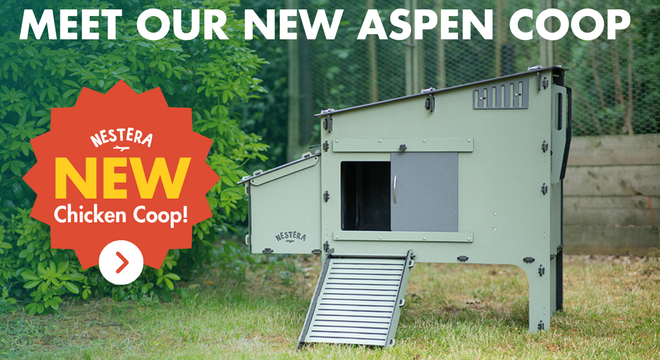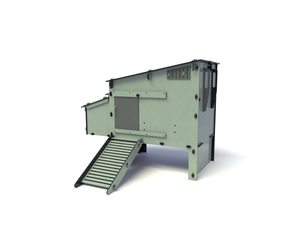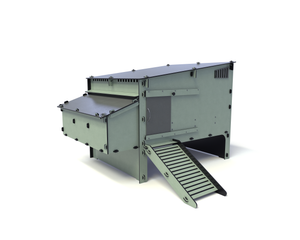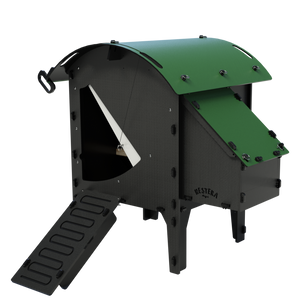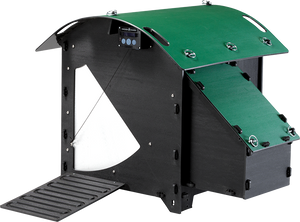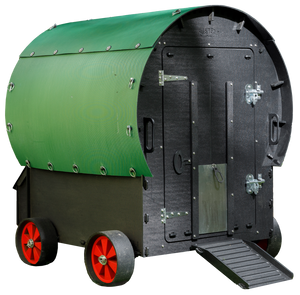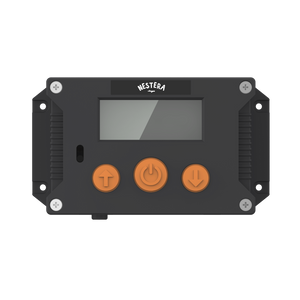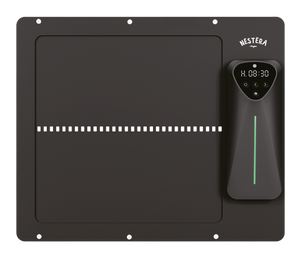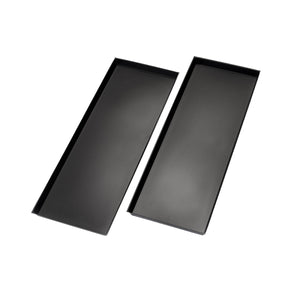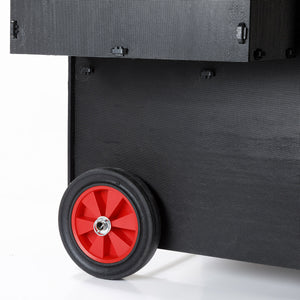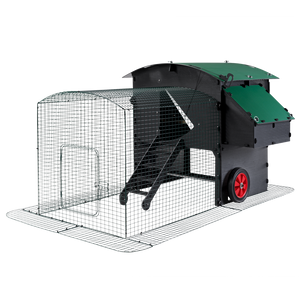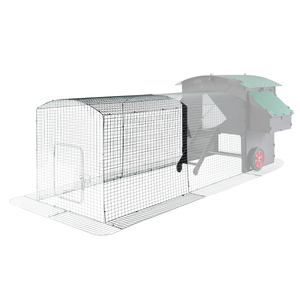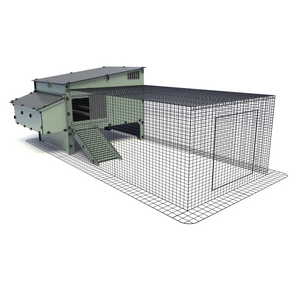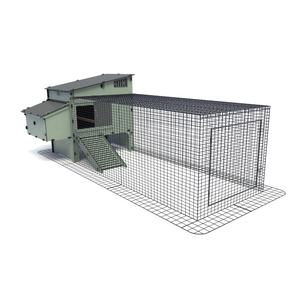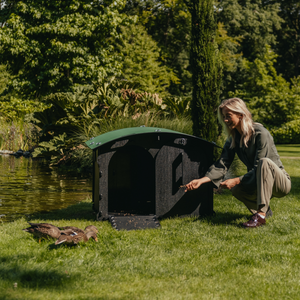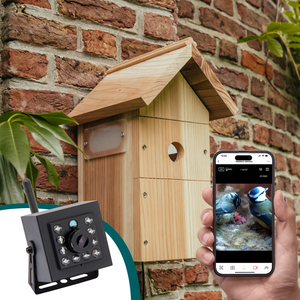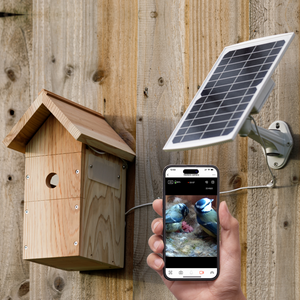When you decide to start keeping chickens, choosing the right fencing is just as important as choosing the right chicken coop.
We are comparing aviaries or fixed runs, short or stock fencing, electric poultry netting, mobile tractor systems and free-range.
Why do I need to fence my chickens?
When you decide you are going to keep an animal, YOU are responsible for all aspects of their care including keeping them safe. Chickens are a PREY animal, which means they are a food source for other animals known as predators.
Predators vary from country to country. In the UK, foxes, badgers, and dogs are common predators. In the US, raccoons, coyotes, birds of prey, and snakes are often seen as predators.
Predators have different tools they can use. These tools include sharp teeth, strong jaws, large claws, the ability to fly or climb, and the ability to dig.
How you decide to protect your chickens will depend on several factors.
We’re going to look at 5 different poultry fencing systems to see how they compare.
Aviary:
Aviaries or ‘flights’ are fixed panels attached to a coop where the chickens exercise all or most of the time. It is positioned in a particular place in the garden and must include elements of shade. They are usually of sufficient height to be able to ‘walk-in’ but shorter versions do exist.

Most panels are made from a timber frame attached to weld mesh. We do not recommend chicken wire because it keeps chickens in well, but it is not strong enough to keep predators out.
Entirely metal aviaries are lower maintenance and have less issues with red mite but are more expensive. The smaller the mesh the better it will be at managing smaller predators and pests but tends to cost more and can make it harder to see your birds.
Aviaries or fixed runs are the best option for your birds, especially if you have limited space.
The chickens will quickly decimate any grass in this area so most keepers use hardwood chippings to give the chickens something to scratch around in.
Aviaries work best when they are covered by a proper roof, corrugated material or even a tarpaulin. This keeps the birds and the substrate drier, cleaner and more hygienic and protects your flock from aerial predators.
Pathogens can build up in aviaries due to the limited area but can be managed by keeping the area dry, regular use of ground sanitising powders and topping up or replacing the chippings periodically.
All aviaries should have foundations or a mesh ‘skirt’ to prevent predators from digging. Aviaries are good at containing all types of poultry but they do limit the amount of space per bird.
You need at least 1 sq metre/10 sq feet per bird and ideally 4 times that! This can be improved by using the space in a more 3 dimensional way and including enrichment activities. Many people use this system as their core fencing option and free-range their birds for short periods when they are in their gardens.
Short/Stock Fencing:
You can make a short fence of 3-4 feet or 90-120cm high from posts and fencing mesh on a roll. It’s great if you want to fence a large area and don’t have issues with aerial predators. This fence is not suitable for birds that like to fly away. However, it is effective for pekins, silkies, large heavy breeds, and most ducks.
It offers minimal protection for your flock against large predators who can climb over or dig under this type of fencing. It’s generally good at keeping most breeds in and off your patio or decking but its efficacy is limited.
Some chicken keepers have special animals that protect their flock from predators. These animals can be dogs, llamas, or rheas. They will alert the flock to danger and may even fight off predators.
Electric Poultry Fencing:
This is similar in height to short fencing and is usually made from black, green, white or orange thick nylon.
The black and green tend to look the least obtrusive in a garden setting. The fencing comes in 25m/75ft or 50m/150ft lengths with metal spikes to fix it to the ground. The mesh is made from interlocking vertical and horizontal nylon strands where the horizontals also contain metal strands.
All these metal strands are joined together at each end of the fencing to make a complete circuit. You arrange the fencing into any shape you like but a circle or square is most common. The fence is connected to a 9V fencing battery or the mains via an energiser or fencer. This converts the power to a high voltage, high current pulse.

When a predator touches the wire it completes the circuit and they receive a swift sharp shock. This prevents animals from climbing under the fencing.
Foxes are good at jumping distances like a ditch but struggle to jump heights without scrambling. Animals have senses that are more sensitive and they have more of them.
When you pass an electric current through a wire it produces a magnetic field. Many animals can detect this and will be reluctant to go anywhere near the fence. To work, the whole system must be attached to a metal post driven a few feet into the earth to ‘ground’ the system.
In dry weather, you need to remember to water your earth rod periodically to produce a good connection. Electric fencing can easily be moved periodically so this system is particularly good if you have a very large garden or a plot of land.
Electric poultry fencing is very dangerous to use near to horned sheep or goats due to the risk of entanglement. Parents of young children should also exercise caution.
To electrify a short fence, use a single strand of wire. The wire should be suspended on isolating brackets. The brackets should be at different heights. The wire should run parallel to each other for added security.
This system will still need a power supply, energiser and earthing rod to work.
Tractor System:
This usually involves a coop and attached run with wheels so that it can easily be moved around a garden or field.

This system has three benefits.
- It allows chickens to eat fresh grass.
- It prevents them from destroying all the grass.
- It also keeps parasitic worms away.
Depending on the stocking density, tractors are either moved daily or every few days but should allow 1 sq metre/10 sq feet per bird as a minimum. Tractors are placed on used vegetable beds for chickens to clean up leftover vegetation, turn over the soil, and eat insects.
Mobile systems like this are particularly suitable for broiler production, where farmers rear chickens for meat.
Free-Range:
Everyone’s definition of free-range will differ slightly. Giving unlimited access to your entire suburban back garden is technically free range and allowing your birds to roam over many acres of pasture too.
Most birds would probably LOVE to go wherever they want, whenever they like but we need to question ‘Is this in their best interests?’.
Chickens who are completely free-range are highly susceptible to predation, theft and injury from vehicles. They will be able to scavenge plants and insects from the natural environment but if that includes bird food and bedding plants from your neighbour, they might not feel too happy about it.
Chickens enjoy woodland areas with dappled shade and plenty of cover that imitates their jungle roots but the thick planting is also favoured by predators who are able use it to creep up on their prey.
In the same way that no two flocks are identical, the same should be said for the set-up you choose.
Think hard about the breeds you have. If your space is limited always go for the minimum number of birds and increase later if capacity allows. Regardless of the fencing system you choose, fencing is only ONE part of ensuring the safety of your flock.
The coop should not be neglected and by using an automatic door unit, you can provide your flock with the best possible comfort and security. Get your automatic door opener here.